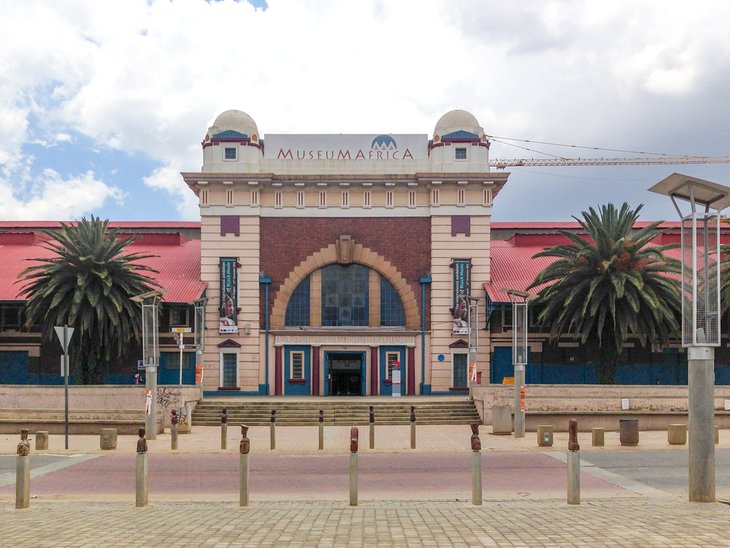All about Johannesburg North Attractions
All about Johannesburg North Attractions
Blog Article
7 Easy Facts About Johannesburg North Attractions Shown
Table of ContentsRumored Buzz on Johannesburg North AttractionsNot known Incorrect Statements About Johannesburg North Attractions Get This Report on Johannesburg North AttractionsFacts About Johannesburg North Attractions RevealedNot known Details About Johannesburg North Attractions Not known Facts About Johannesburg North Attractions
The city owes its location to the visibility of a a lot more priceless resource: gold. The city grew on the side of the Witwatersrand Main Reef, a subterranean stratum of gold-bearing quartz-silica empire that arcs for thousands of miles below the Highveld. The majority of the gold mines in the city stopped operation in the 1970s, yet in its day the Witwatersrand gold industry represented more than 40 percent of the globe's annual gold production.Johannesburg has a warm environment. Summer season temperature levels average concerning 75 F (24 C); winter season temperature levels average concerning 55 F (13 C) and only periodically dip below freezing. The city enjoys about eight hours of sunlight per day in both winter and summer. Rainfall standards concerning 28 inches (700 millimetres) per annum, but the overall differs significantly from year to year.
What rainfall the city obtains drops nearly specifically in the summertime months, typically in amazing late-afternoon electrical tornados. Air air pollution positions a significant problem, especially in the winter season, when thermal inversions impede the westward circulation of air from the Indian Sea. Contamination is most severe in the largely resolved Black municipalities on the city's periphery, where numerous homeowners still count on coal for fuel.

Some Of Johannesburg North Attractions
The balance of the city is occupied by whites. Holiday accommodation varies in character and high quality.
Physical development, although somewhat restricted by transport, continued promptly as immigration to South Africa, and Johannesburg in particular, enhanced substantially.
Most bad suburbs were combined, with inadequate blacks and whites living together, although the wealthy suburban areas were typically scheduled for whites. This altered with the election of the National Party in the 1948 political elections, that started to formalise the system referred to as racism. Apartheid officially assigned which residential areas each race can live in under the Group Areas Act.
The previous system of eleven numbered regions was reorganised in 2006. Marshalltown, as seen from the top of the Carlton Centre. The M1 and M2 run behind the buildings, and the southern suburban areas prolong past the highway boundary. The central city of Johannesburg is situated within the city's Area F. The number of people living in the internal city on a casual basis is unknown, as numerous are unlawful immigrants. The joblessness, education and learning, and age profiles of the area are all unidentified, due to the trouble of acquiring reputable information regarding the area.
Getting The Johannesburg North Attractions To Work
Yeoville and Bellevue have a mix of apartment and single domestic systems on tiny whole lots. The region lies on a mountainous divide that runs from eastern to west. The most conspicuous geographic function is Observatory Ridge, which is called for the big observatory located on it. The recreational rooms are no more made use of, as a result of safety and security issues.

How Johannesburg North Attractions can Save You Time, Stress, and Money.
R. Tambo International Airport). The eastern residential areas are several of the earliest areas of Johannesburg, there are big communities of Jewish and Read More Here other European backgrounds, most of the population is English talking. There are 3 fairway along with a number of protected ridges with viewsites. There are a number of strong and up-market enjoyment and purchasing locations in the east such as the Eastgate Purchasing Centre and the Greenstone shopping center.
Initially constructed to house male migrant workers, many have actually been boosted as homes for pairs and family members. The suburban area was not historically allowed to develop employment centres within the location, so virtually all of its citizens are commuters useful reference to other parts of the city.
All about Johannesburg North Attractions
The N1 Western Bypass attaches the north suburbs with the north-western residential areas. The houses in the northern residential areas are primarily official, with no significant locations of casual housing, or housing that does not have a permanent framework. This is a well established location, there is a fad of land use adjustment from household to commercial, especially along primary arterial roadways and around well-known nodes.
The location is well linked to road networks, specifically along view it now the north-south axis formed by the M1 and N1. Roadways to the eastern and west are less well established, as there are no freeways taking a trip in that direction. Towards the northern border of the city, the thickness of growth lowers, leaving huge areas of undeveloped land around Midrand.
The Best Guide To Johannesburg North Attractions
The very first suburban area to the north of the inner city is Parktown, which is located on a hillside overlooking the central city and Hillbrow. It has numerous well-off citizens and Edwardian-design manors, as well as the Education and learning and Clinical universities of the University of the Witwatersrand. The large concrete Charlotte Maxeke Johannesburg Academic Health Center controls the horizon of Parktown.
Report this page